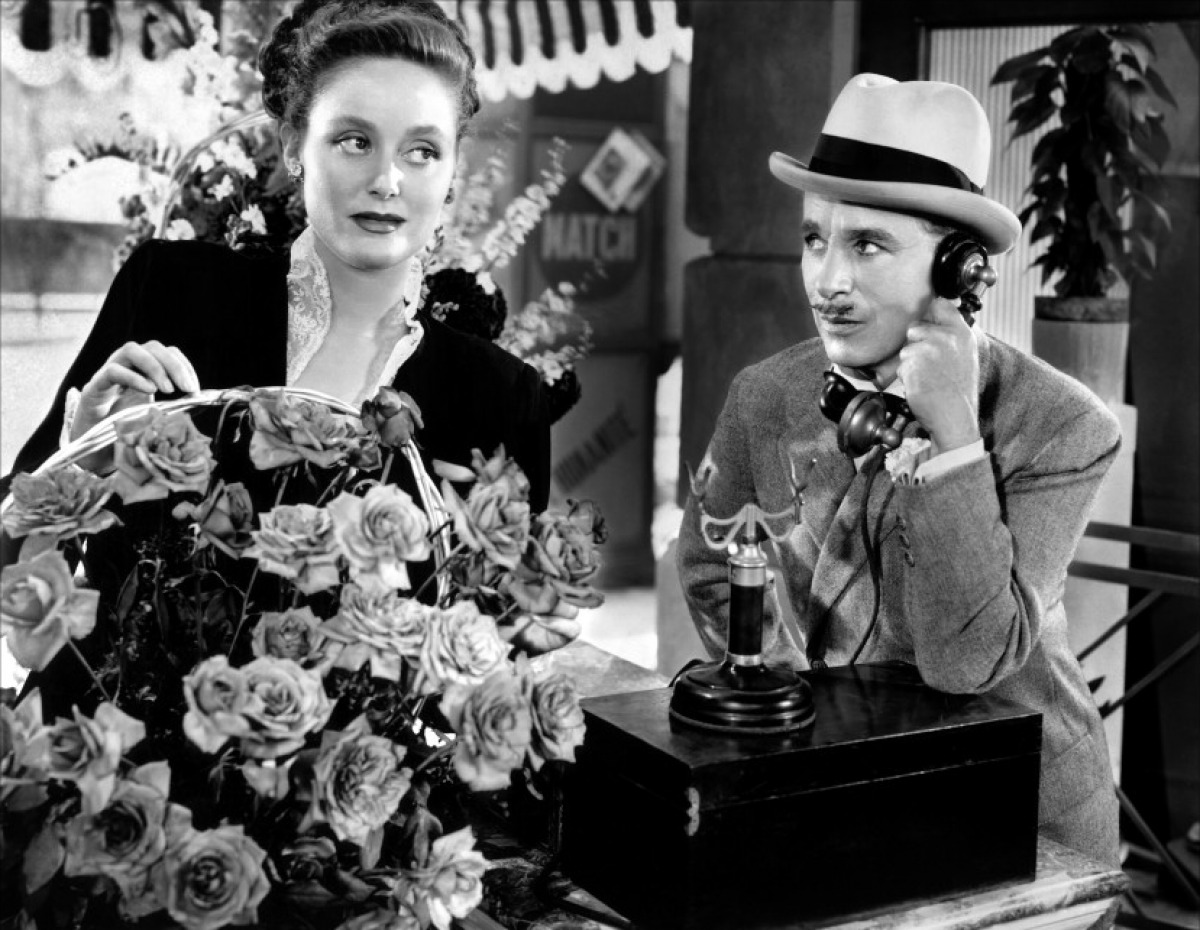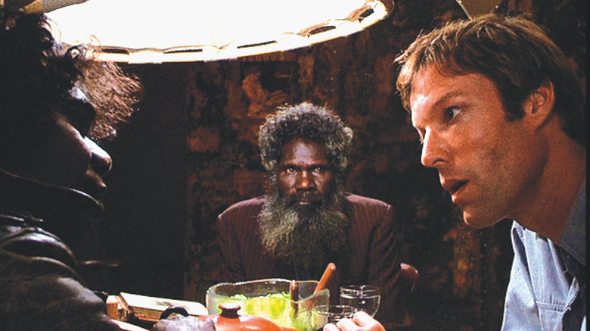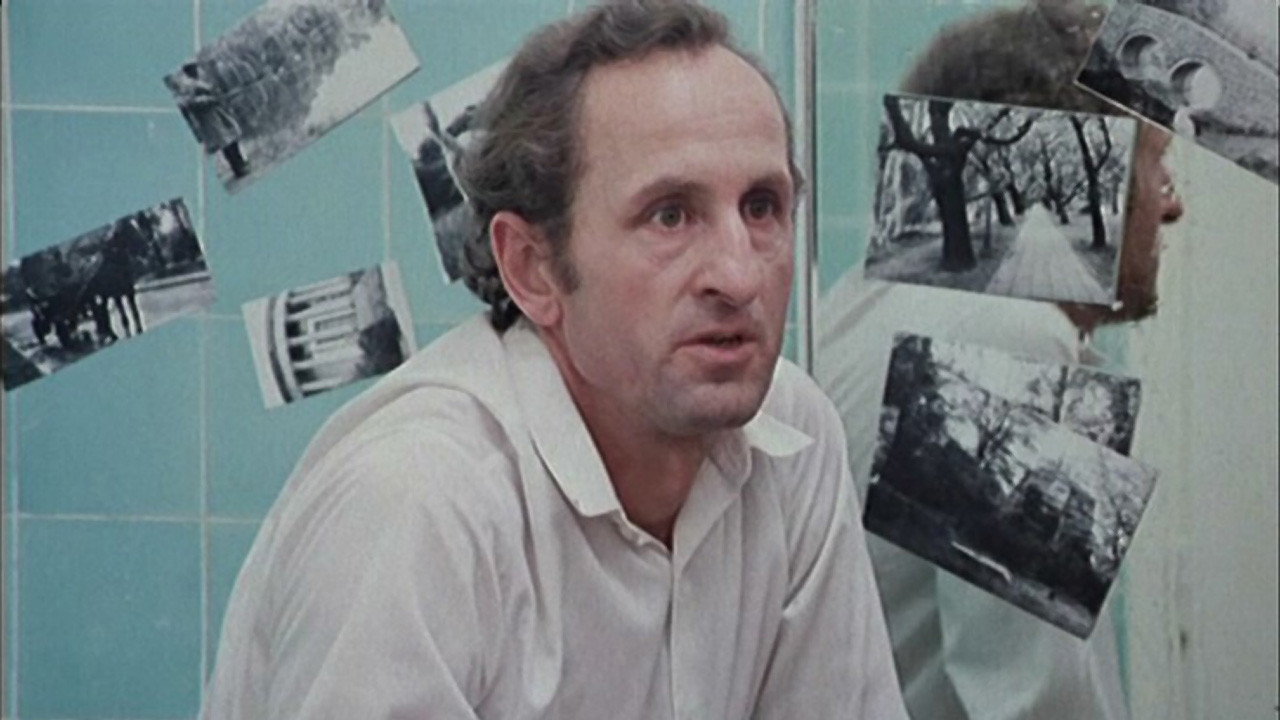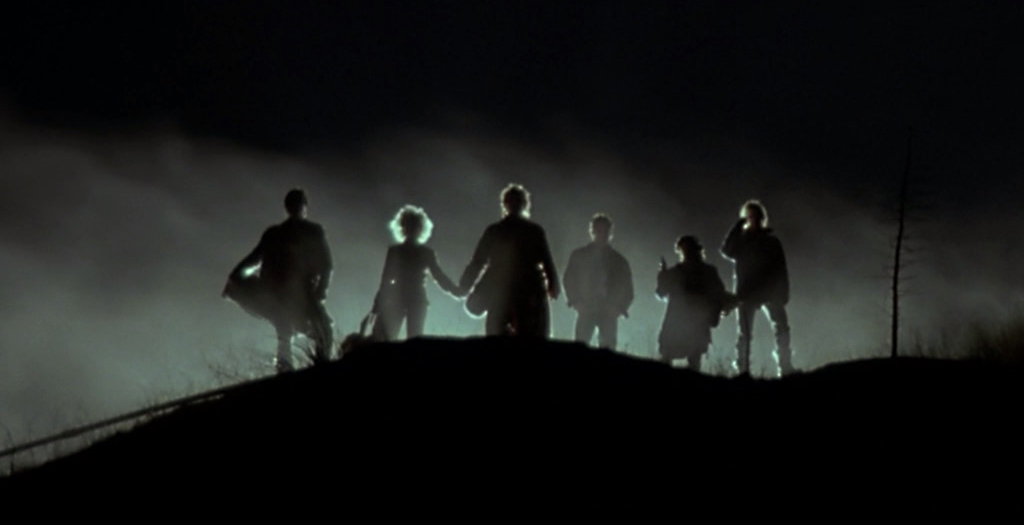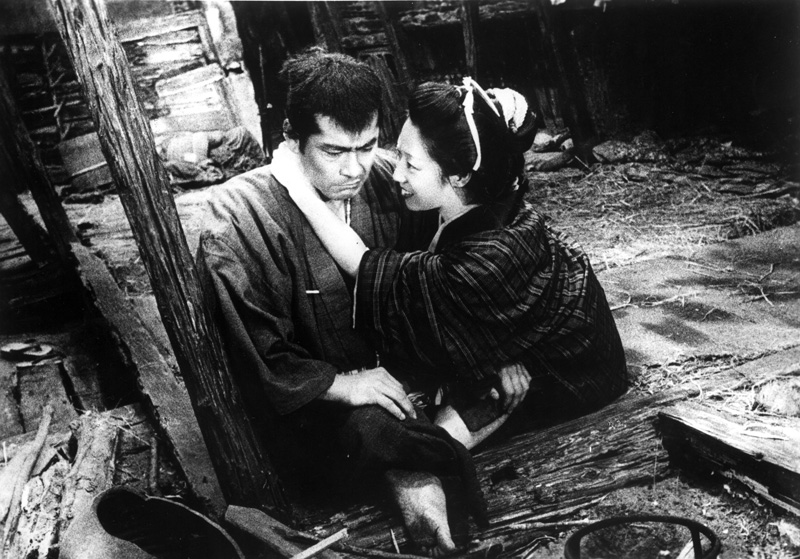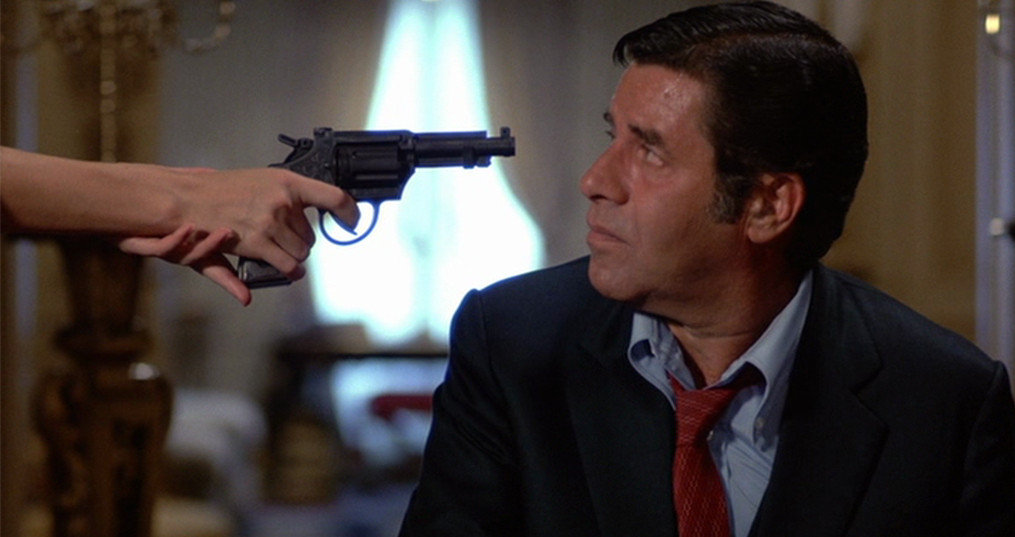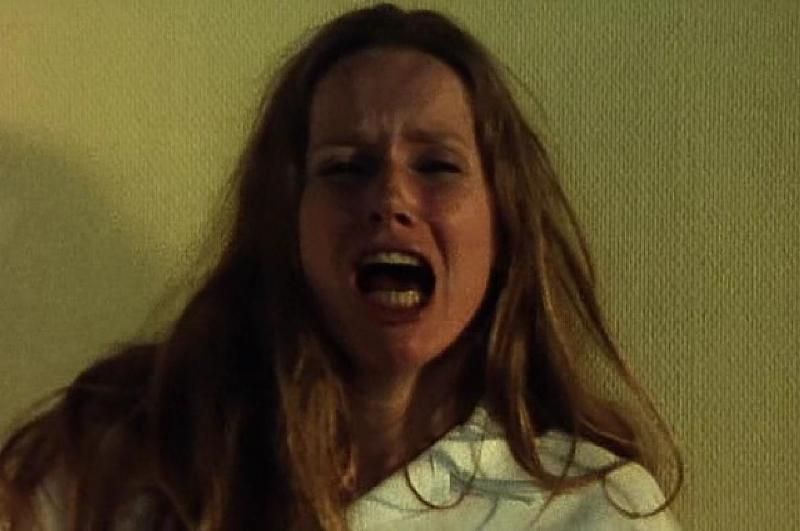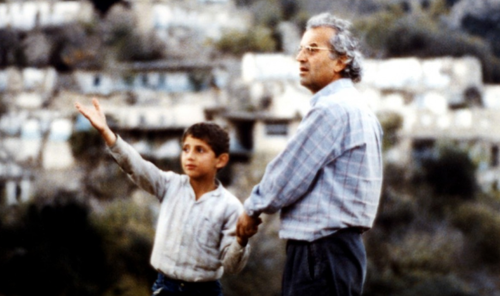8. Monsieur Verdoux by Charles Chaplin
Charles Chaplin became known first for his silent renditions of a lowly, comical tramp. Mostly starring in short films before appearing in “The Gold Rush” (1925), “City Lights” (1931) and “Modern Times” (1936), Chaplin became an icon for his physical comedy and resistance to the emergence of the talking picture.
Shortly after, he appeared in his satire of Adolf Hitler’s reign in Germany, “The Great Dictator” (1940), which broke away from his Little Tramp character and submitted to the era of the talking picture. With dialogue, this set Chaplin’s film apart from his previous works, though he employed similar physical comedy and remained accessible to wider audiences.
In 1947, Chaplin released “Monsieur Verdoux”, a dark comedy about a man marrying and murdering wealthy widows in order to support his family. This film was unexpected and a complete change from Chaplin’s former sensibilities as a filmmaker. Chaplin later wrote of the film that it was “the cleverest and most brilliant film I have yet made”, though critics and audience members alike booed Chaplin’s film at its premiere and gave scathing reviews.
In later reviews, it has been hailed as “Chaplin’s most startling, most invigorating film” (Time Out Magazine), and “a near masterpiece” (Sara Cardace, New York Magazine), scoring a 97% Fresh score and an average rating of 8.3/10 on the review website Rotten Tomatoes.
9. The Last Wave by Peter Weir
Australian director Peter Weir is known in his home country for being one of the primary innovators behind Australian New Wave cinema, bringing about “Picnic at Hanging Rock” (1975) and “Gallipoli” (1981). Before these, he dabbled in Australian exploitation, dubbed “Ozploitation”, proffering the cult hit, “The Cars that Ate Paris” (1974).
After the Australian New Wave, Weir went on to direct international successes in the United States, among them “Witness” (1985), starring Harrison Ford, “Dead Poets Society” (1989), featuring one of Robin Williams’s most recognisable roles, and “The Truman Show” (1998), Jim Carrey’s first foray into more serious roles.
Buried amid his involvement in the Australian New Wave is Weir’s film “The Last Wave” (1977). Being the follow up to his greatest success, “Picnic at Hanging Rock”, “The Last Wave” is another surrealist drama, and an admirable entry in Weir’s oeuvre. Following David Burton (Richard Chamberlain), a barrister, defending five Aborigines accused of murdering a friend of theirs, the film takes on much greater social and moral contemplations.
This film, despite similarities to his previous work, is more heavily involved in the psychology of each character, and the distinction between dreams and reality. It received positive reviews at the time of release, though audiences were not so enthusiastic, this being one of Weir’s most isolating films, though this does not detract from its excellence.
10. The Scar by Krzysztof Kieslowski
Most well remembered for his swan song trilogy, the Three Colours Trilogy (1993-94), Krzysztof Kieslowski will remain firmly planted in the annals of filmic history. His next most famous work is “The Decalogue” (1989-90), and its interconnected films, “A Short Film About Killing” (1988) and “A Short Film About Love” (1988). His films were often about injustice, politics and society, only earning popularity in his final years of filmmaking.
Kiesowski’s debut work is unsurprisingly very thematically based, with a conceptual plot, set around postwar Poland and witnessing a successive line of directors of an industrial plant. Without any overt message, the film is a meditation on the Polish government at the time, invoking a contemplation from the audience.
Kieslowski’s initiation of a discussion was seen as a bold move for a new filmmaker, and despite praise his work was soon forgotten. This is an early insight into Kieslowski’s uncompromising style.
11. Near Dark by Kathryn Bigelow
Now renowned for her thrilling depictions of recent history, Kathryn Bigelow was not always a serious contender in Hollywood. “The Hurt Locker” (2008) won major acclaim and accolades, including the Academy Award for Best Picture.
Bigelow followed this up with “Zero Dark Thirty” (2012), which – despite some controversy for its portrayal of torture as an interrogation technique used by the CIA – is considered by many critics to be superior to its predecessor. Before these, she directed the blockbuster action thrillers “Point Break” (1991) and “Strange Days” (1995), which had lukewarm critical reception.
What now seems totally aberrant to Bigelow as a director, “Near Dark” (1987) swept critics away upon release. Only finding a smaller, cult audience, the film managed to pick up excellent reviews from many critics. Richard Corliss called the film “the all-time teenage vampire love story”, Hal Hinson of The Washington Post calling it “poetic”.
Certified Fresh by Rotten Tomatoes with an 88% approval rating, the film earned an Average Rating of 7.5/10, and a remarkable cult following after disappointing box office returns. Mixing genres of horror, western and romance, the film is a refreshing work of dark humour and clever filmmaking.
12. The Lower Depths by Akira Kurosawa
Akira Kurosawa started his working life as a painter. His artistic flair seemed to flourish when he started making films, among them “Rashômon” (1950), “Seven Samurai” (1954), “Throne of Blood” (1957) and “Yojimbo” (1961). Working until the end of his life, Kurosawa remained an acclaimed director until the end, one of his final works being the heavily praised “Ran” (1985).
Other than his achievements onscreen, Kurosawa gained praise from all time greats such as Ingmar Bergman, who made critically lauded “The Virgin Spring” (1960) after being inspired by Kurosawa, which Bergman even called a “lousy imitation of Kurosawa”.
An adaptation of the Russian play by Maxim Gorky, “The Lower Depths” (1957) stands as one of Kurosawa’s most nuanced, quieter efforts. A rare Kuroasawa film to eschew violence and focus on social commentary.
The film is set in a Japanese slum, concentrating on a gambler who vies for the affection of his bitter landlady’s daughter. The gambler is played by Kurosawa regular Toshiro Mifune, who was commended for his performance along with the rest of the cast. The film has never achieved the status of other Kurosawa works, but still earned an Average Rating of 8.2/10 on the review website Rotten Tomatoes.
13. The King of Comedy by Martin Scorsese
Violent antiheroes, crime syndicates and memorable soundtracks pave the lane down Martin Scorsese’s filmography. With “Mean Streets” (1974), “Raging Bull” (1980), “Goodfellas” (1990) and “The Departed” (2006), Scorsese has been ever-present throughout the past several decades, maintaining a consistent ability to produce brilliant cinema about violent people with guilty consciences.
In “Taxi Driver” (1976), he showed a more cynical side, depicting society lionising one of cinema’s most deranged characters, Travis Bickle. In “The Last Temptation of Christ” (1988), “Gangs of New York” (2002), “The Aviator” (2004) and “The Wolf of Wall Street” (2013), he suggested corruption in authority, though with moral ambiguity, neither championing nor condemning it.
Being such a prolific and diverse filmmaker, Scorsese is bound to have a few obscure works. Reinventing his career once more was “The King of Comedy” (1982), which was “largely misunderstood upon its release” (Critics’ Consensus, Rotten Tomatoes). Following a struggling and deranged comedian named Rupert Pupkin (Robert De Niro), the film is set half in reality, half in his delusions of grandeur. He resorts to stalking his idol, before hatching a sinister plot to achieve stardom.
Essentially about an obsession with the concept of celebrity, Scorsese’s film was intentionally shot with realism and simplicity in order to counteract his previous success, “Raging Bull” (1980). As a result, many could not even recognise this as a Scorsese picture upon first release.
14. Face to Face by Ingmar Bergman
There are few people in the world who have not at least heard the name Ingmar Bergman. His influence is immeasurable, being cited as “the greatest living filmmaker” during his life by critic Richard Corliss, which Woody Allen agreed with.
Stanley Kubrick even proclaimed, “to me, Bergman is number one!” Crafting “The Seventh Seal” (1957), “Wild Strawberries” (1957), “Persona” (1966), “Scenes From a Marriage” (1973) and “Fanny and Alexander” (1982), just to name a few, the eerie, perturbing Bergman has rightfully earned his place in the pantheon of auteurs.
Vincent Canby noted the director “has never been more precise, clear, levelheaded” in “Face to Face” (1976). Jonathan Rosenbaum from The Chicago Reader, on the other hand, said of the director that he was “at his most painful, pretentious and empty”. A divisive film, some love it, some hate it, and many just don’t know how to feel about Bergman’s fantasy film.
Starring Bergman regulars, Liv Ullman and Erland Josephson, “Face to Face” is about a psychologist who is ironically plagued with mental illness. Bergman’s unsettling style is put to use in this polarising film, his skill on display as vividly as ever.
15. Life, and Nothing More… by Abbas Kiarostami
Kiarostami led the second Iranian New Wave in cinema in the late 1980s and 1990s, with the films “Where is the Friend’s Home?” (1987), “Close-up” (1990) and “Taste of Cherry” (1997), which won the Palme d’Or at Cannes in its respective year. Kiarostami is now considered one of the greatest and most innovative directors the world of cinema has ever seen, easily distinctive and very unconventional.
“Life, and Nothing More…” (1992) is considered by some to be Kiarostami’s crowning achievement, employing a technique where he somehow blurs the dichotomy between fact and fiction. Some have called the film resting somewhere between a documentary and a straight fiction film, becoming a unique hybrid of the two.
Scoring a 100% Fresh rating on Rotten Tomatoes, with an 8.7/10 Average Rating, Kiarostami’s film follows a father and son searching for two of the stars of Kiarostami’s previous film, “Where is the Friend’s Home”, in the aftermath of a real life earthquake.
At times distressing and often reassuring, the film strikes a clever balance between hope and despair. The film is Kiarostami’s least commercial endeavour, and by far his most under appreciated. “Life, and Nothing More…” is reaffirming and essential for any serious film enthusiast.
Author Bio: Linus Tolliday is a freelance writer in Melbourne. He loves movies more than he loves his friends, family and life itself.
